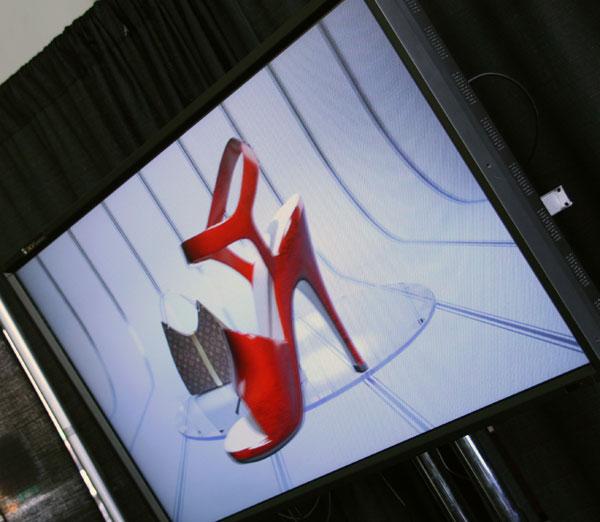3DFusion Glasses-Free 3D

The math-based system extracts a "depth map" from a stereoscopic signal and re-renders it for every frame. In conjunction with some additional proprietary processing of the image, this makes the boundaries between viewing cones invisible. Currently, the system can produce up to 17 single-eye views (8.5 L/R pairs), but it is capable of producing as many as 64; most other autostereoscopic displays produce nine single-eye views.
One benefit of this approach is a considerable bandwidth savings. After processing a 3D signal, the system sends the left image and right depth map to the display, which is converted to a stereoscopic image. This requires only 6 percent more bandwidth than a 2D signal, compared with nine times the bandwidth for a conventional 9-view autostereo display.
Another hallmark of the system is its flexibility and adjustability. For example, a depth map from one image can be applied to a different image to create a hybrid. Also, optimized settings for a particular image can be embedded in the signal so it looks correct without having to adjust anything.
The 3DFusion system applies different algorithms to different types of shots—close-ups, long shots, fast motion, etc. For the NAB demos, these algorithms were selected manually, but the final product will do so automatically in real time.
The demo display was a raw 1080p, 52-inch LCD panel sourced from Samsung with 3DFusion's lenticular filter, processing, and other electronics. Interestingly, the filter uses active LCD "lenslets" that can be disabled, allowing full-resolution 2D images to be displayed without optical artifacts. In 3D, the perceived resolution in each eye was only 905x509. Why not 1920x540 as with other autostereoscopic displays? Because the processing that eliminates the viewing-cone boundaries overlaps pixels in those areas. Of course, starting with a native 4K panel would greatly improve the 3D resolution.
Demo images included clips from Avatar and Band of Brothers that had been converted from 2D to 3D using 3DFusion's conversion algorithms, and the 3D effect was pretty subtle. More dramatic was a live feed from some 3ality 3D cameras capturing a live basketball game being played between the Central and South Hall of the Convention Center. 3DFusion had only a day or so to configure its system for those cameras, so the image was by no means perfect—there were lots of jaggies and other artifacts except in objects that were close to the camera, since the manually selected algorithms were optimized for close-ups.
In all cases, I could clearly see the pixel structure if I stood too close, in part because the lenslets provide a bit of magnification to sharpen edges, though this would not be nearly so evident if the panel behind the filter was 4K. Most impressive was the complete absence of visible boundaries between viewing cones and crosstalk as I walked around the screen.
The company plans to have a 52-inch flat panel available this year, but like the first HDTVs, it won't be cheap—I was told it will be in the $10,000-$12,000 range. And the native panel resolution will be 1080p, which means the 3D resolution will not be high-def. But as with all new technologies, the price will drop and the quality will improve over time if the company can reach the economy of scale. Also, 3DFusion plans to provide downloadable content by converting five to 10 movies per month from 2D to 3D. One thing's for sure—this technology is the most promising glasses-free 3D I've seen, especially when applied to a 4K panel.
- Log in or register to post comments






























































